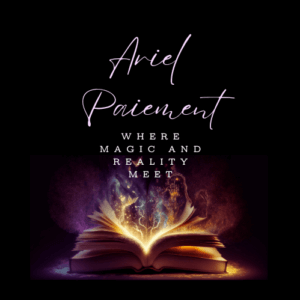Introduction
This seemed like a fitting place to begin a new series on Thursday Technicalities since we talk about world building tools on Saturday Setups and since I was just discussing where I learned most of what I know in my newsletter this week. So, yes, we’re going to talk about more world building tools, but this time, we’re going to start examining ways to really weave world building into your story and how you can bring your world to life.
A lot goes into world building writing. There’s lots of room for failure, but it’s not always so easy to succeed at this. Sure, there are lots of ways to weave world building into the story, lots of ways to show your reader this world you’ve built, and lots of ways to world build and many more tips for world building. But more often than not, those methods aren’t used by authors. Worlds either end up flat because the author decided they wanted to flavor their romance/adventure/thriller/etc with fantasy instead of flavoring their fantasy with those other things, or they end up flat because the author didn’t weave the world into the story well and ended up info-dumping, which drives readers nuts. Neither way is a pretty way to die. So, let’s start into how you can avoid this.
Beginnings
For world building to truly work well, you have to understand that what you choose to do outside the story will probably be way more than what you’ll ever show in the story if you take the conventional approach. Now, it doesn’t have to be that way, but usually it is, and there’s nothing wrong with that. But while a series might have room for you to show your reader a picture of your whole world and all the cool things you put into it, a single book will not. This means that when you’re actually considering your world building in light of your novel, you need to do so with the very beginning of the book: when you start working on that kernel of an idea known as your plot.
There are really two, maybe three, ways this happens.
First, you may have a plot but not necessarily the world. In this case, you’re able to start building the world and the plot together. If you’re taking this approach, you can use an approach that Holly Lisle’s world-building course calls SANE world building. You build what you need when you need it and no more (unless you’re just doing it for fun). This approach is good if you’re the sort of person who feels like you can’t start writing until you have every detail of the world nailed down. You’ll never get anywhere doing that, so approaching world building writing as a part of building your plot can help you to tie the two together without going insane or never writing a single word of the story on paper.
Second, you may have the idea for a world, but not a story. This can happen to those of us who love world building writing because we conceive an idea for some sort of power system, magic system, or other world-based structure, but we don’t necessarily have the characters and the stories that are going to populate it. However, in this instance, the world building itself often gives rise to the story. When I was doing my undergrad in accounting, a friend and I came up with a story idea and were co-writing. However, she was taking a long time to do anything on her end, and I was bored, so I started doing world building writing for a bunch of random things and history-related stuff for the world. (Yeah, I know. Nerdy. But I was in accounting, and that was really, really boring.) Long story short, as I was developing the history, I ended up with the idea for Rith’s Disciple, which led to a vague desire to fill out the history following it. When I joined Wattpad’s ONC contest, that desire combined with a really good prompt resulted in Bane of Ashkarith.
Finally, though perhaps not always as common, sometimes you have the idea for a world and a story idea, which leads to further stories. This happened with Bane of Ashkarith. I already had the world established, as I mentioned above, but the history I’d developed for the world gave rise to Bane of Ashkarith and the rest of the series that I’m working on. All of the stories are literally just histories of the famous people from the world’s past. Readers wouldn’t necessarily pick up on that right away unless they knew me and had read about the background behind the series, but because of the combination of the idea for a world and a story together, I ended up with an entire series. Nice when that happens, right?
Expanding our Understanding
I think the other important world building tip for world building enthusiasts (and those who hate it too) to realize is this: world building is more than creating languages, building races, and making up fantastical creatures or cool tech. It’s way more.
Have you ever thought about how strange it would be to us if metal striking stone made a hissing sound instead of a clink? Or what if, when you stepped on grass in the summer, it crunched like gravel but stepping on gravel was soundless? What if the sky was purple, not blue?
When you’re creating a world, building it includes little details. These details can be split into three areas, really. Set, objects that act as props for the set, and mechanisms/methods by which things work.
tHREE aREAS OF pLOT-oRIENTED wORLD-bUILDING
Set is pretty straightforward. Having a sky that’s purple instead of blue is a set item. It sets your world apart from others. Lots of things could be part of the set. Anything from the color of the sky to the way water looks lapping on the sand to the sand itself could be a part of set. To clarify, set is different from your prop objects in that props are things people bring onto the stage. They’re objects like pens, candles, food on a table, or the table itself. Your set is anything that occurs there naturally like trees, bushes, deer paths, bodies of water, and so on.
Your props and objects are just as varied as set. But they’re also a part of world building writing, something Holly Lisle points out in her course on the topic. People don’t often think that props are as important to the stage you’re building for the story as the story or the big flashy fantasy creatures being installed, but they are. The objects around us say a lot about who we are and why we are the way we are. They are our insight into those around us and even into the world. What is there can sometimes be as important as what’s not. If everyone uses candles and not flashlights, that tells you something about the world. If stone doesn’t exist much of anywhere, but people build everything with wood, it says a lot about the set without you ever having to come out and say anything. Objects can also help us to understand the more immaterial mechanisms and rules in place surrounding the world. Those rules have to act upon an object, person, or part of the set. So we can often see them in action and learn those rules of order by observing what they act upon. This can help us to avoid info-dumping or becoming too obtrusive with our world.
Objects carry a lot of weight in the world, though. In a story, if you show us an object, particularly if you show it to us independent of any human interaction, we’ll assume it’s important. Now, maybe you put it there intentionally to tell us what kind of person occupies the space it’s in. Or, maybe it plays some larger role in the story as a whole. Only you know that and can decide. But, the fact remains that if you put it there, it needs to serve a purpose. If it doesn’t serve one, don’t put it in. That’s what leads to overwriting, purple prose, and bored or confused readers. None of those are good, so just don’t do it.
Mechanisms and rules are far less obvious than the first two, but no less important. Mechanisms and rules are what tell us that on Earth, when you drop a coin on a concrete surface, it clinks or gives off a ringing noise. It doesn’t purr because that would be breaking the rules. Mechanisms tell us that healthy grass should bend under our feet and spring back when we step on it in the summer time. It isn’t going to turn into a bunch of deadly spikes and stab the bottoms of our shoes or our feet. If we didn’t have mechanisms and rules to keep things organized and somewhat predictable, then everything would devolve into chaos. Your world is no different in this regard.
The main method for showing mechanisms and rules, however, is different than it was for the first two categories of practical, plot-oriented world-building. For mechanisms and rules, you generally end up showing them when they’re in use on objects, interacting with the set, or affecting a character. They’re seen subtly, but even though most readers don’t immediately pick up on it all the time, they’ll expect it to be a trend unless you’ve made it clear what just happened was really weird.
For example, in the first chapter of Pathway of the Moon, I show my main character, Leo, scaling a wall using shadows to stick himself to the wall. He proceeds to do the same on the way back out of the castle after a successful execution of his target. This sets a precedent or a rule for his magic. Shadows allow those who can use them to stick themselves to different surfaces. I didn’t represent it as an odd thing or something that other shadow users couldn’t utilize, so the reader will anticipate that it’s normal for the world and the character, and if I use it again, they won’t find it odd. These kinds of encounters help to flesh out and build the world for the readers without them even noticing or realizing that you have.
Conclusion
In upcoming posts, I’ll go into some more specific writing tips for slipping world building into your story and talk about the techniques. The point of this post was simply to help you to understand some basics on how you can begin weaving the two together. It is by no means an exhaustive thesis on the subject. I hope that it’s been useful to you, and I hope you’ll stick with me as we explore some of the various ways myself and other authors utilize to develop worlds that readers can delve into and enjoy in their own rights because of their individuality and fresh perspectives.


